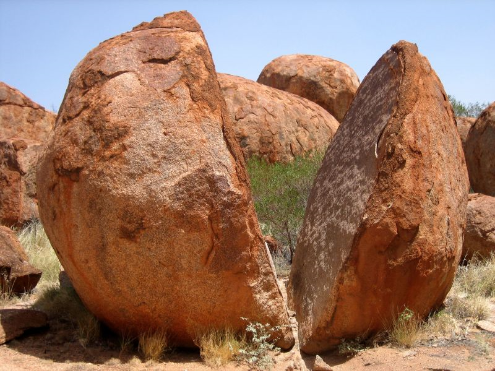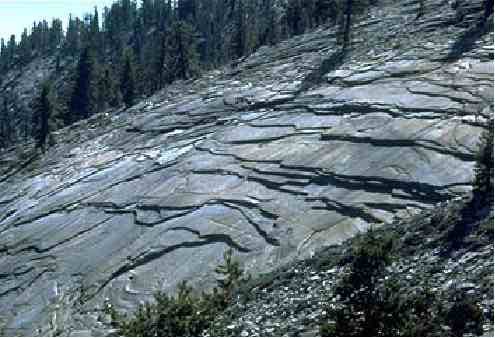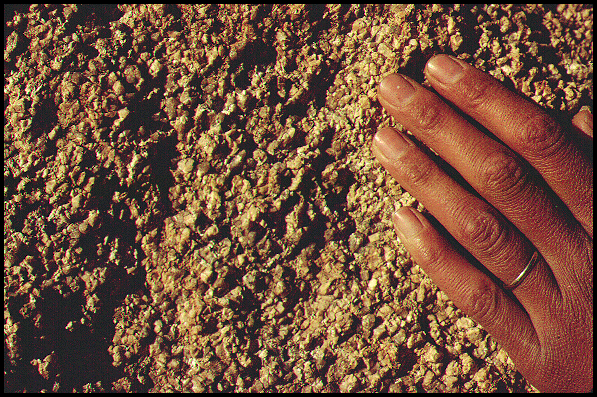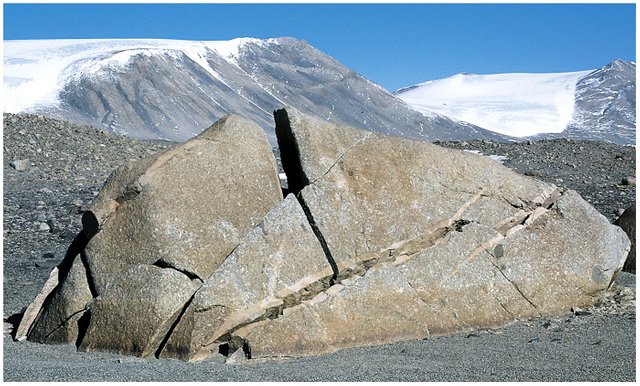Landforms by change in temperature
Physical or mechanical weathering can happen under any situations. Temperature fluctuation is one of the most common causes of physical weathering. This thermal change outcomes some important landforms in desert areas.
The following landforms in desert areas are:
1) Block Disintegration
In dried area, rocks develop joints and cracks through successive process expansion and contraction and ultimately breakdown into smaller blocks. This type of landform is called block disintegration.

Processes:
a) Due to change in temperature: In desert area, the bare rock surfaces get too much heated in the daytime which causes significant expansion in the outer layer, but in the night, temperature gets down close to freezing level which results in contraction. This process of expansion and contraction creates a series of parallel and perpendicular joints to the exposed surface of the rock which later breaks into blocks. This process may be called Block Disintegration.
b) Due to pressure release: Only change in temperature should not be considered as the cause of block disintegration. It also happens due to load or release of confining pressure of superincumbent.
Action Rocks: The action of the block disintegration process mainly happens on Basalt type of rocks.
Results:
(i) This process forms steps like stairs on the rocks. In fact, Deceantrans are created through this mechanical process.
(ii) Flat shaped hill top is created through this kind of mechanical process.
Shattering: This is the advanced process of block disintegration which produces highly angular pieces with sharp corner and edges.
2) Exfoliation Weathering
When the rock contains homogeneous minerals such as granite, which is the thin surface area of rock. Layer of rocks soaks up heat in the day time and starts to expand. During the night, this surface layer contracts than inner ones and are peeled off one after another like an onion. This is called Exfoliation or Onion Peeling.

Process: Rocks are not a good conductor of heat. When the rock has homogeneous minerals, it expands when it absorbs heat at daytime and contracts when temperature gets lower to near freezing point during the night. This process mainly happens at the outer layer of the rock, but inner part of the rock does not participate in it. As a result of it, the outer layer of the rock is pulled apart and peels off like layers of onion. This is called Exfoliation. N. H. Horrocks comments: <blockquote>“Exfoliation is partly produced by frost action, even it hot deserts where freezing of dew at night can produce frost heaving.”</blockquote>
Acts on Rock: Exfoliation weathering process is affecting many of the granitic batholiths, which are visible above the ground surface.
Effect: Round shaped hill top is built through the exfoliation weathering process.
3) Granular Disintegration
Different minerals present in the rocks may have different rates of expansion and contraction. For example, the rocks containing dark coloured minerals will soak up more heat and get bigger to a greater extent than the rocks containing light coloured minerals. Such alternating expansion and contraction process between day and night break up the rocks into small pieces. This process is called granular disintegration.

Process: The coarse-grained rocks are more influenced by shattering process in those desert area which holds high temperature during the day time. The different sections of the same rock gets dissimilar amount of sun rays. As a result, differential expansion and contraction are found in the different sections of the rock which cause stresses and break up the rock into smaller parts.
4) Frost Action
In humid, cool temperate area or in high altitude, water is filled in cracks and pores of rock at daytime and freezes at night. Ice expands 1/10 of the volume of water when it gets freeze. As a result, it creates huge pressure on walls of cracks, due to which it becomes widened and finally the rocks break into smaller parts. This is called Frost Action.

Mechanism: Disintegration of rocks due to freeze and thaw of water is very common process that happens in the temperature and cold climatic areas. The rocks are disintegrated by Frost Action in two ways:
i) When the water is collected and freezes in between the particles of the rocks.
ii) When the water is collected in crevices and pores spaces, it causes the process of alternate expansion and contraction, due to which stresses and tension are formed within the rocks and thus it is fragmented into smaller parts.